Four Seasons c.1580-1620
RCIN 807497
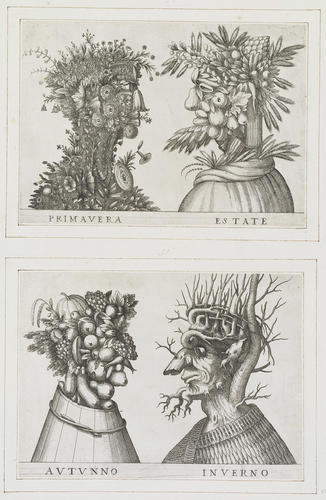
Style of Giuseppe Arcimboldo (1526-93)
Master: Four Seasons Item: Spring and Summer c.1580-1620

Style of Giuseppe Arcimboldo (1526-93)
Master: Four Seasons Item: Spring and Summer c.1580-1620
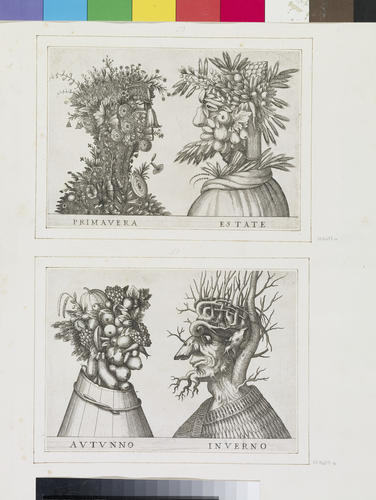
Style of Giuseppe Arcimboldo (1526-93)
Master: Four Seasons Item: Spring and Summer c.1580-1620

Style of Giuseppe Arcimboldo (1526-93)
Master: Four Seasons Item: Spring and Summer c.1580-1620
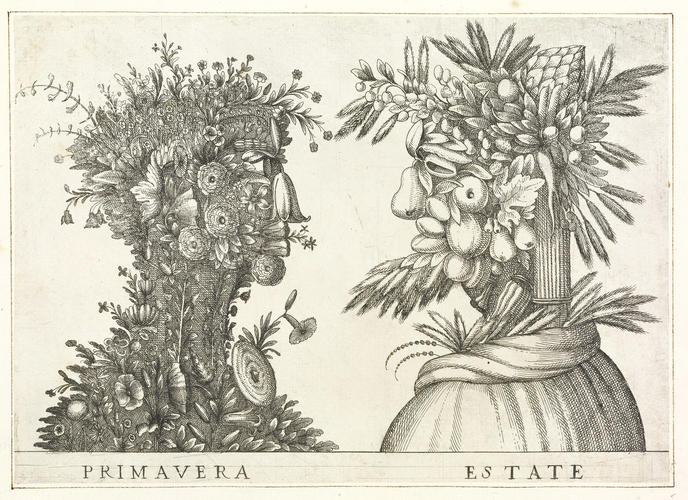
Style of Giuseppe Arcimboldo (1526-93)
Master: Four Seasons Item: Spring and Summer c.1580-1620

Style of Giuseppe Arcimboldo (1526-93)
Master: Four Seasons Item: Spring and Summer c.1580-1620
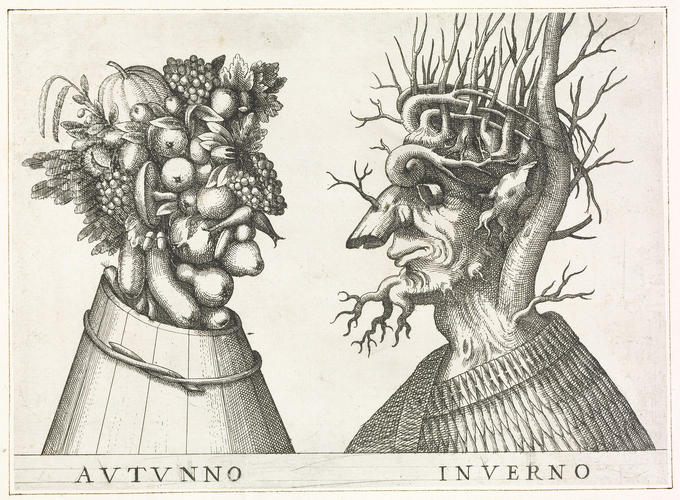
Style of Giuseppe Arcimboldo (1526-93)
Master: Four Seasons Item: Autumn and Winter c.1580-1620
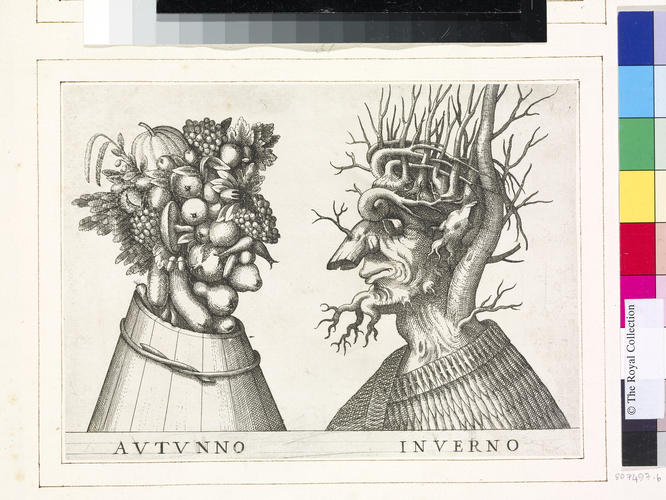
Style of Giuseppe Arcimboldo (1526-93)
Master: Four Seasons Item: Autumn and Winter c.1580-1620








-
Two prints of the Four Seasons represented in fantastic heads composed of the season's flowers and fruits. These were inspired by Arcimboldo's painting for Maximilian II executed around 1573. Thomas DaCosta Kaufmann has discussed the complex political iconography of Arcimboldo's series, demonstrating its relationship to the imperial panegyric writing of his close collaborator at court, the humanist poet Giovanni Battista Fonteo. In this respect, the Seasons were not intended merely as a joke but reflected the all-encompassing power of Maximilian who ruled the empire of the world, consisting of elements and governed by the seasons.
It is highly unlikely, however, that in their printed form they continued to embody the same allegorical or political significance. While a number of details on these prints correspond with Arcimboldo's paintings, there are sufficient differences to suggest an intermediary source. Autumn and Winter (RCIN 807497.b) are close to his paintings of those subjects, but the image of the Summer (RCIN 807497.a) has transformed Arcimboldo's original conception almost beyond recognition. For more information on Arcimboldo and the prints inspired by his works in the album, see RCIN 807495.
For more information see Mark McDonald, The Print Collection of Cassiano dal Pozzo. I: Ceremonies, Costumes, Portraits and Genre, 3 vols, Royal Collection Trust 2017, part of The Paper Museum of Cassiano dal Pozzo: A Catalogue Raisonné, cat. no. 399.Provenance
From the collection of Cassiano dal Pozzo (1588-22 October 1657); inherited by his brother, Carlo Antonio dal Pozzo (1606-1689); sold by Carlo Antonio's grandson to Clement XI, 1703; acquired by Cardinal Alessandro Albani by 1714, from whom purchased by George III in 1762
-
Creator(s)
Acquirer(s)
-
Medium and techniques
Category
Object type(s)







